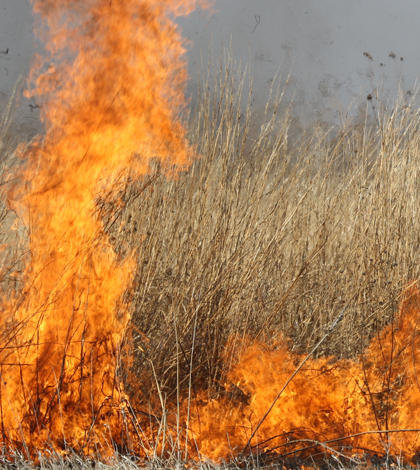Risk Of Wildfires In Future Largely Depends On Population Changes

Wildfire across a Kansas grassland. (Credit: U.S. Fish and Wildlife Service)
Global warming tends to increase the risk of wildfires by drying the things that fuel them like trees, grasses and other vegetation. The role of carbon dioxide actually helps to decrease that risk, largely because the gas is used by plants to grow. But what parts do humans play in ramping up or stomping out the risk of wildfires?
An investigation completed by researchers at European universities and the National Center for Atmospheric Research has found that it’s complicated. This is owed to the fact that humans can serve as both igniters and extinguishers of out-of-control forest fires.
To better pinpoint the effects that people have on fire risk, scientists incorporated changes in population size and distribution into a model. This helped to reveal that population growth and its hotspots will have a greater impact on future fire risk than just population increases alone.
That finding, combined with the fact that people put out more fires than they start, helps to explain why global burned area has gone down over the past century. For other results, find the full study published in the journal Nature Climate Change.
Top image: Wildfire across a Kansas grassland. (Credit: U.S. Fish and Wildlife Service)





0 comments